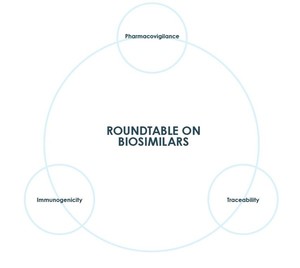Biosimilar insulins can offer a cheaper alternative to originator insulators and substantial savings for healthcare systems. A recent ‘Quick guide: Initiating or switching to a biosimilar insulin’, [1] published in the Journal of Diabetes Nursing, outlines key aspects to consider when switching.
Written as an accompaniment to the in-depth review of biosimilar insulins [2], the author David Morris recommends that biosimilar insulin should be considered for insulin-naïve patients. It is also noted that, when it comes to switching to a biosimilar insulin, this should be done by a clinician and expert in diabetes, together with the patient. Switching should never be done at the point of dispensing.
It is also highlighted that, in the UK, switching in individuals with stable glycaemic control is advised against by the Association of British Clinical Diabetologists (Jayagopal et al, 2018) and Diabetes UK (2019). However, contrastingly, the National Health Service (NHS) commissioning framework for biosimilars (NHS England, 2017), has recommended that, switching in individuals previously achieving optimal glycaemic control can be undertaken if the biosimilar is started at a 10% lower dose than the originator insulin which is then titrated back up to the original dose as necessary.
In addition, it is noted that, in those individuals with poor glycaemic control, a switch to a biosimilar is reasonable, in addition to tackling the underlying reasons for the poor control. In some cases, such as where there have been persistently low glucose levels or below-target HbA1c, the starting dose of the biosimilar should be reduced by 20%. However, if glucose levels are high or HbA1c is above target, the biosimilar should be started at the same dose as the originator and uptitrated if necessary.
When it comes to safety of switching, the author recommends that insulins should be prescribed by brand name to avoid inadvertent substitution during dispensing.
It is also highlighted that it is important that individuals who switch to a biosimilar insulin are fully informed and receive appropriate education. In addition, any potential differences in insulins brought about by delivery devices, e.g. cartridges or reusable pens, and administration, storage conditions and shelf life, need to be considered. Those who switch should monitor their glucose readings closely to identify variability compared to the reference insulin.
In addition, the author emphasizes that it is important that healthcare professionals report any issues or adverse effects using the Yellow Card system.
The Dutch Institute for Responsible Medicines Use (Instituut voor Verantwoord Medicijngebruik, IVM) had released in March 2021 a toolbox for healthcare providers on how to switch patients to insulin biosimilars [3].
On 28 July 2021, the US Food and Drug Administration had approved insulin glargine biosimilar Semglee (insulin glargine-yfgn) as the first interchangeable biosimilar product approved in the US for the treatment of diabetes [4].
Related articles
Nova Scotia, Canada implements biosimilar switching policy
Northwest Territories, Canada announces biosimilars switching policy
The impact of insulin biosimilars on the diabetes landscape
British Columbia expands biosimilar switching programme to include insulin
| LATIN AMERICAN FORUM The new section of the ‘Latin American Forum’ on GaBI has been launched. The objective of this new section is to provide you with all the latest news and updates on developments of generic and biosimilar medicines in Latin America in Spanish. View last week’s headline article: Nomenclatura de biológicos y biosimilares en Brasil Browse the news in the Latin American Forum! Register to receive the GaBI Latin American Forum newsletter. Inform colleagues and friends of this new initiative. LATIN AMERICAN FORUM Se ha lanzado la nueva sección del ‘Foro Latinoamericano’ sobre GaBI. El objetivo de esta nueva sección es brindarle las últimas noticias y actualizaciones sobre desarrollos de medicamentos genéricos y biosimilares en América Latina en español. Vea el artículo principal de la semana pasada: Nomenclatura de biológicos y biosimilares en Brasil iExplore las noticias en el Foro Latinoamericano! Regístrese para recibir el boletín informativo GaBI Foro Latinoamericano. Informe a colegas y amigos sobre esta nueva iniciativa.
|
References
1. Morris D. Quick guide initiating or switching to a biosimilar insulin. J Diabetes Nurs. 2022;26(1):229.
2. Morris D. Biosimilar insulins: an in-depth guide. J Diabetes Nurs. 2022;26(1):228.
3. GaBI Online - Generics and Biosimilars Initiative. IVM releases toolbox on how to switch patients to insulin biosimilars [www.gabionline.net]. Mol, Belgium: Pro Pharma Communications International; [cited 2022 Mar 4]. Available from: www.gabionline.net/Biosimilars/General/IVM-releases-toolbox-on-how-to-switch-patients-to-insulin-biosimilars
4. GaBI Online - Generics and Biosimilars Initiative. FDA approves first interchangeable insulin glargine biosimilar [www.gabionline.net]. Mol, Belgium: Pro Pharma Communications International; [cited 2022 Mar 4]. Available from: www.gabionline.net/biosimilars/news/fda-approves-first-interchangeable-insulin-glargine-biosimilar
Permission granted to reproduce for personal and non-commercial use only. All other reproduction, copy or reprinting of all or part of any ‘Content’ found on this website is strictly prohibited without the prior consent of the publisher. Contact the publisher to obtain permission before redistributing.
Copyright – Unless otherwise stated all contents of this website are © 2022 Pro Pharma Communications International. All Rights Reserved.








 0
0











Post your comment